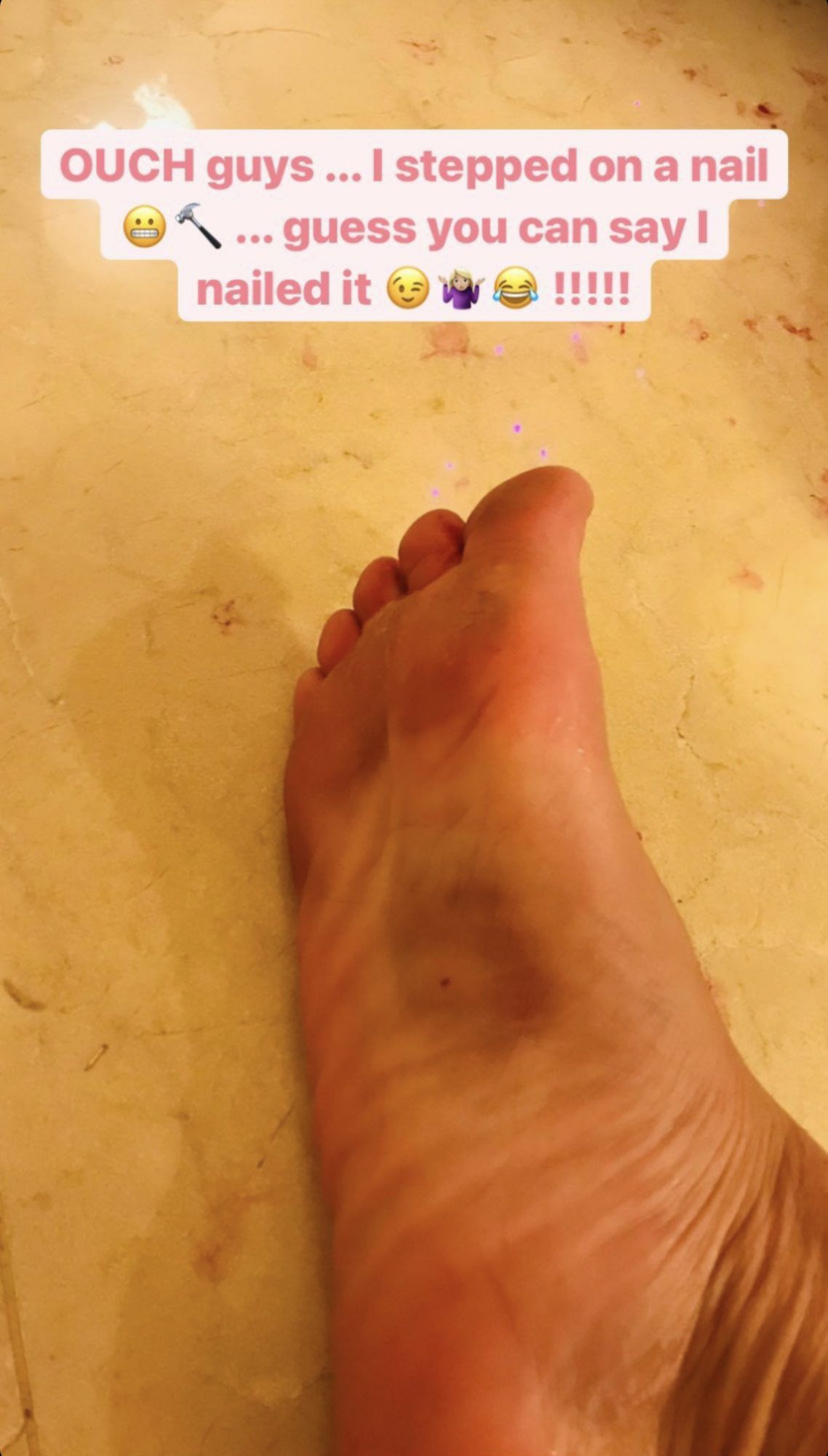

The first thing you should do is wash your hands with soap (to prevent infection), then apply pressure with a cloth to stop the bleeding, the Mayo Clinic states. Next, clean the wound to remove any debris or dirt, and you can do this by running water over it. If anything remains in the wound, scrub it off with a washcloth. But if you can't remove all the debris on your own, see a doctor for help.
Finally, apply an OTC antibiotic cream (such as Polysporin or Neosporin) and cover the wound with a bandage. Changing the bandage daily—in addition to any time it becomes dirty or wet—is crucial to preventing infection, per the Mayo Clinic. As the injury heals, be on the lookout for warning sings, such as pain, pus, redness, swelling, or fever. You should see a doctor if you notice any of these signs in the aftermath of a puncture wound, as they could signal infection.
If your puncture wound is deep and you haven't had a tetanus shot in the past five years, check in with your doctor to determine whether you need a booster. If a tetanus booster is necessary, it needs to be administered within 48 hours of the injury, per the Mayo Clinic. Tetanus is spread by bacteria and can lead to tightening of the jaw muscles to the point where you may be unable to open your mouth. So don't delay this important step.
Source: Read Full Article






